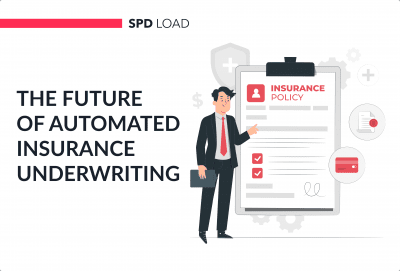Marketing Metrics and Objectives in Startups 101
- Updated: Nov 14, 2024
- 8 min
You can run a startup and suggest something completely new and unique on the market and it doesn’t matter what are you doing, developing an app or setting an eCommerce store. This brand-new product or service looks promising and you believe in success.
However, without setting the right marketing objectives, your startup is doomed to fail.
Marketing objectives help you focus on the things that play a crucial role in the business. If you set the objectives correctly, your entire marketing strategy will work for a hundred percent.
In this post, you will find out what marketing objectives exist and how to set them up for your startup.
Let’s start!
Still looking for that breakthrough concept? Check out ways to find an idea for a unicorn startup.
Building a startup is challenging but rewarding. This guide shows how to start a startup from scratch.
Grow your startup globally with our clear marketing plan that brings real results.
A Few Words on How to Create Right Marketing Objectives
Have you ever heard about “SMART” criteria?
SMART criteria include five components that help create marketing objectives. Let’s review them one-by-one:
- “S” goes for “Specific” – you must realize what the result you want to achieve
- “M” goes for “Measurable” – it is strictly important to track the progress using KPIs
- “A” goes for “Achievable” – don’t delude yourself with the expectations and set your goals reasonably
- “R” goes for “Relevant” – make sure the objectives align with the entire marketing strategy
- “T” goes for “Timely” – you must achieve your goals for the specific time frame
Remember that marketing objectives for your startup must comply with this “SMART” concept.
Now, compare these two marketing objectives:
a) Increase sales by 25%
b) Increase sales of your service across Canada from $50K to $75K by the end of the first quarter of 2021
How do you think which of these two objectives aligns with “SMART” criteria?
You are right!
The second variant is an example of how a good marketing objective should be compiled.
Keep in mind that you shouldn’t limit yourself to a single marketing objective for your startup. It makes more sense to create a few general marketing objectives that everyone in your team could understand what to do.
Looking for marketing support? Discover the key steps to outsourcing digital marketing effectively.
How to Choose Marketing Objectives for Your Startup
Marketing objectives vary. And you can create a number of them to accomplish. However, if you want to be a smart strategist, you should think about what “not to do” first of all.
How to choose marketing objectives for your startup?
You can stick to these two rules:
- KPIs must be short and long term. The best way to see whether you achieve your marketing objectives is by executing short and long-term KPIs. To put it simply, the objectives must fulfill both profit and brand building for your startup. Lastly, it will help you keep your growth marketing efforts afloat.
- Don’t create too many objectives. Setting tons of objectives leads to making your marketing strategy less effective. You can’t boil the ocean. Thus, you should better focus on one or two objectives and embody them.
Plus, take into account that the ideal balance between marketing spend on sales and brand building is about 40/60. Remember this concept when setting marketing objectives for your startup.
Marketing Objectives That Matter and How to Measure Them
Now, let’s review eight important marketing objectives that can boost your startup drastically.
1. Increasing brand awareness
Brand awareness stands for spreading the word about your company in the niche. The more people hear about your startup the more potential customers you will attract. And that is when your startup becomes a corporation with a big name.
Brand awareness can be done by many means, such as search engine advertising, email signature marketing, social media marketing, TV ads and even billboards.
Learn how to craft effective email marketing strategies for startups to boost engagement.
Whichever channel you choose to invest in, you will have to set up measurements in order to assess the campaign’s effectiveness and contribution to your bottom line.
Use the CPM calculator to keep ad spending in check and find the right balance for reach and budget.
When you set this marketing objective you should remember two things:
- Brand positioning. Answer a few questions “Does your target audience resonate with your brand?” and “Do your marketing communication activities create a relevant buzz around the brand?”
- Brand magnitude. Your purpose is to make sure people know about your brand within the niche. (For example, take a look at Solitaired – a well-known game-as-a-brand among hundreds of others.)
To measure the brand awareness of your startup, you need to run in-depth market research. For this purpose, you need to analyze analytical data, use SEO software, or cooperate with a market research agency.
2. Share of voice
Basically, share of voice (SOV) explains how your brand is visible in the market compared to the competitors. What’s more important, SOV is tightly connected with market share. If SOV is higher than market share, it leads to creating excess SOV. While both these metrics should walk hand in hand.
A couple of SOV examples:
- Increase search visibility from 10% to 12% across Canada by the end of the first quarter of 2021
- Increase search ad impression share from 50% to 75% across Canada for your tool by the end of the first quarter of 2021
- Double YouTube subscribers from 1.5K to 3K by the end of the first quarter of 2021
To measure SOV you can use the reports depending on the channel you want to analyze. Hence, if you are interested in organic search, you should track target keywords by comparing them with the competitors’ data. The tool you can use for this analysis is Rank Tracker from Ahrefs.
The report called “Visibility” shows you the percentage of the clicks from tracked keywords that land on your and your competitors’ websites.
Looking for effective marketing tools? Here are some top email marketing software platforms to consider for your business.
3. Track the Balance Between “Users” and “Customers”
Growing your user base is quite important. But it doesn’t mean that the overall number of converted customers will grow as well.
However, there is the other side of the coin. If you really want to make your startup fundamental, you can earn more trust and followers in your target audience by offering something educational and for free.
For example, here at Visme, we offer a free online course on how to create presentations. By completing the course everyone receives a certificate.
It brings no cost for the company but helps amplify the brand’s position and enlarge a user database.
4. Work on Quality of Your Leads
If your startup belongs to a subscription-based business, this objective is for you.
The concept of this objective is to attract more potential leads by improving the level of your marketing communication and text production.
One thing is to measure the lead quantity using your CRM, the other – the lead quality, which is quite difficult. But if you pay attention to lead scoring, you can get the insights you need on this matter.
By analyzing the leads, you should draw attention to these five factors:
a) The overall purchasing power of your startup
b) Trial tier and setup
c) User behavior on your site
d) What users say about your service to customer/sales teams
e) Other information you’ve collected from a user registration process
Find the best TypeScript developers for your project.
5. Skyrocket Sales Growth
Obviously, you want to make money with your startup. Consequently, you must understand what financial metrics you should analyze based on your business model.
When it comes to measuring sales metrics, this process must be simple and precise. Use a good CRM system that can guarantee accurate data analysis. If you’re interested in how to build CRM from scratch, our guide will give you all the tools and insights you need.
Just for the record, if you happened to use Enhanced Ecommerce tracking in Google Analytics, don’t use it for other purposes except for marketing analysis. Unfortunately, Google Analytics skews the data by default. Thus, there is no point in relying on it.
Explore how CRM in recruiting can transform your hiring process and improve candidate relationships.
6. Boost Product Demand
Even if the representatives of your target audience know about your brand or service, it doesn’t mean they will buy from you. While your goal is to get them converted into your customers.
With the help of boosting product demand, you will be able to fill the gap between two stages of the marketing funnel – awareness and consideration.
To measure this metric, you should use Google Search Console. If you see that people search for your brand or service on Google, thus they want to know more information regarding this.
You can analyze data for the past three months over the year including search queries with the name of your brand or service.
7. Work on Improving a Marketing Funnel Flow
A marketing funnel consists of different stages. You can never know for sure how a certain customer found your service. It could be a promoted post a person stumbled upon on Facebook. Or read your piece of content and landed on your blog. Whatever the reason, you don’t have any guarantee that all these leads will convert into your customers.
Your task is to identify at what stages the most drop-offs happen and close a gap.
Here are the marketing metrics you need to track per each stage of the funnel:
- Awareness – brand awareness, traffic quantity, SOV
- Interest – email subscribers and returning visitors
- Consideration – traffic quality
- Conversion – conversion rate and sales
- Retention – churn rate, customer lifespan, Net Promoter Score (NPS)
Analyze each stage of the funnel using the suggested metrics accordingly and find the lead leakages.
8. Customer Lifetime Value
First of all, let’s see what Customer lifetime value (CLV) is.
CLV is a metric that helps estimate the amount of money a customer will spend to buy your service.
By increasing the average customer’s worth you will improve the financial metrics and attract new customers. And here is the formula on how to measure CLV:
Avg. Order Value x Avg. Annual Purchase Frequency x Avg. Customer Lifespan
For example, if the AOV is $10, the customers tend to buy your service 8 times per year during the period of 5 years on average, the CLV would be 10*8*5=$4K
Work with these metrics and raise your income massively.
To Sum Up
Brainstorming and setting marketing objectives for your startup is not an easy peasy lemon squeeze task. It is a very serious and challenging process of making decisions. The wrong marketing objectives might lead your business to a blind alley.
Come up with the list of marketing objectives and narrow them down to a few the most impactful to your business.
Don’t forget to be armed with the tips on setting marketing objectives for your startup suggested in this post.
And feel free to check out this post if you are looking for insights on app development cost.












